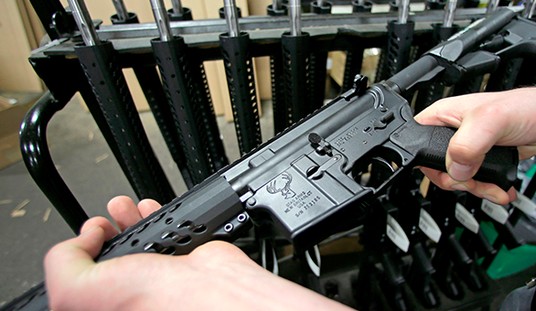I remember President Obama making the claim that the vast majority of firearms found in the possession of Mexican criminals, like the cartels, came originally from the United States. This came to mind in the immediate aftermath of the Fast and Furious scandal when we learned that ATF officials forced gun dealers to sell guns to straw buyers and allowed them to be taken across the border into Mexico.
It wasn’t hard to see why many people wondered if the real aim of that operation was to try and paint a picture of American guns fueling Mexican drug violence.
Regardless, Obama never got any real gun control off the ground, but not for lack of desire.
Yet his claim has persisted all these years later. However, is it right? Maybe, or maybe not.
“A lot of the violence in the U.S. is because of the drugs going in from Mexico, and a lot of the violence in Mexico is because of the guns coming from the U.S.,” one high-ranking former Mexican intelligence official told Fox News, speaking on the condition of anonymity. “Many of the cartels in Mexico are being paid by counterparts in the U.S. not only with money but with guns.”
Some estimates – including a recent study published in Oxford’s Journal of Economic Geography – have pegged the number of guns crossing the U.S-Mexico border at over 200,000 annually.
The most recent available data compiled by the National Tracing Center for the Bureau of Alcohol, Tobacco, Firearms and Explosives (ATF) indicated that a total of 67,295 firearms recovered in Mexico between January 1, 2013, and December 31, 2018, were determined to have been either manufactured in the U.S. or legally imported into the U.S., an average of 11,216 per year.
Moreover, a total of 28,741 recovered weapons – an average of 4,790 annually – were classified as having an “undetermined” source.
Of all the recovered weapons, ATF documented that 51.1 percent were pistols, 13.6 percent were revolvers, 27.4 percent were rifles, 5.4 percent were shotguns and 2.5 percent were a combination of machine guns, destructive devices, derringers, tear-gas launchers, combination guns, flare guns, receivers/frames, silencers or any other “unknown” type.
Nonetheless, some law enforcement experts and analysts have concluded such figures represented only a small amount of the firearms rotating through the cartel-plagued country and argued that many more that Mexican officials have seized were not documented or traced.
And, the ATF itself became a contentious piece of that puzzle between 2009 and 2011 in what became known as “Operation Fast and Furious,” when the ATF’s Phoenix Field Division allowed illegal gun sales in order to track the sellers and purchasers who were believed to be linked to Mexican drug cartels. In 2010, two of the weapons issued in the operation turned up at the murder scene of a U.S. Border Patrol agent.
In other words, a fair percentage of these guns are basically untraceable. They don’t know where they came from.
Further, we don’t know how many of the weapons recovered are a result of Fast and Furious. We’re highly unlikely to ever know for certain. Yes, a certain number of guns each year does come from the United States. As we saw in a story yesterday, people will always buy something that’s legal in one place and transport it to somewhere that it’s not. So yeah, at least some do come from the U.S.
However, it should also be noted that even if we somehow completely cut off the supply of guns from the United States to Mexico, it wouldn’t stop the violence there.
After all, drugs are illegal just about everywhere, yet the cartels don’t seem to have an issue getting their hands on them. Do you really think that an international criminal organization like a cartel couldn’t get guns aplenty?
Not that it really matters, because what we see yet again is that no matter what anti-gunners try to claim about guns south of the border, it’s impossible to determine just how many guns ended up there because of official government policy, how many ended up there from other parts of the world, and just how many ended up there through ordinary smuggling efforts.








Join the conversation as a VIP Member